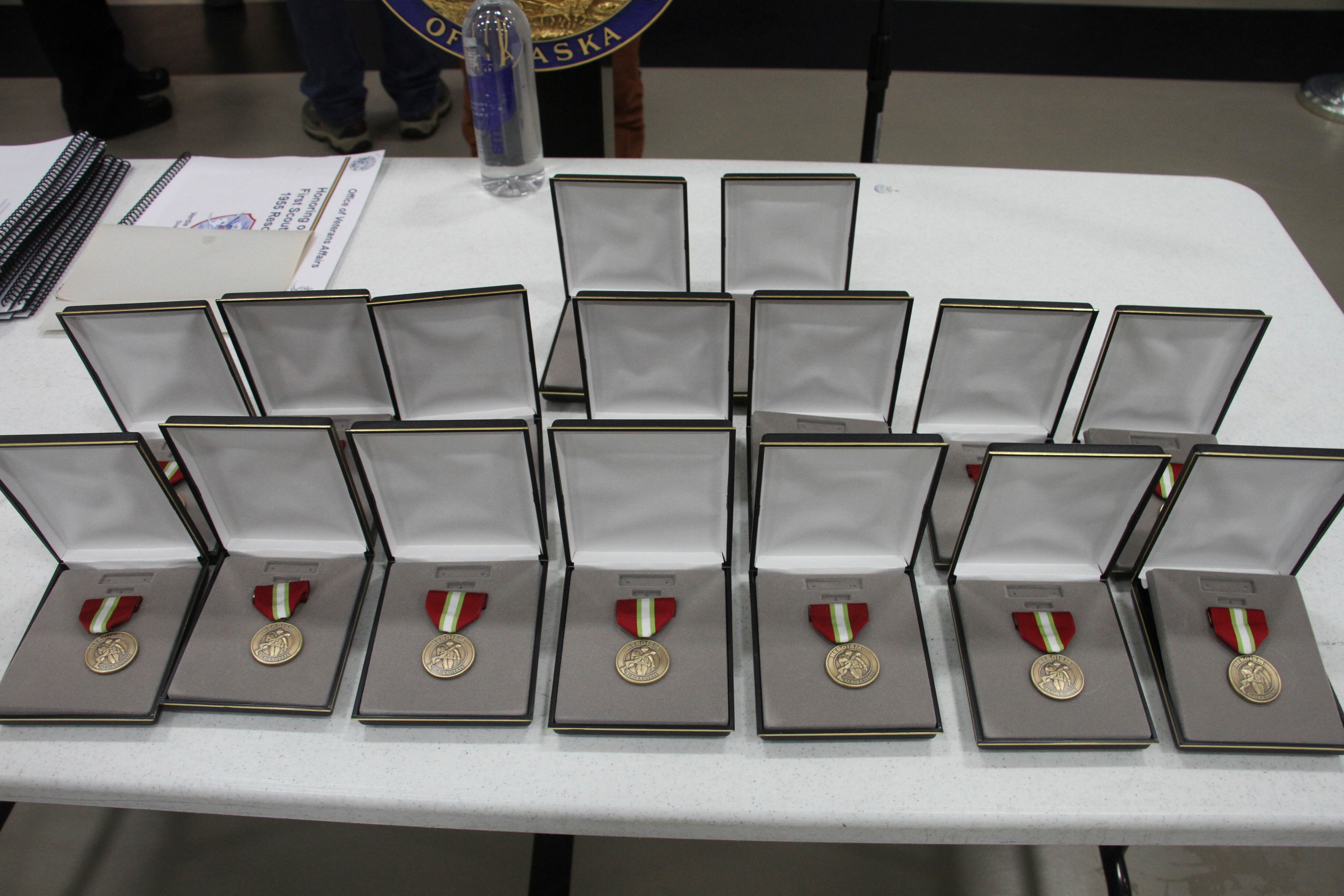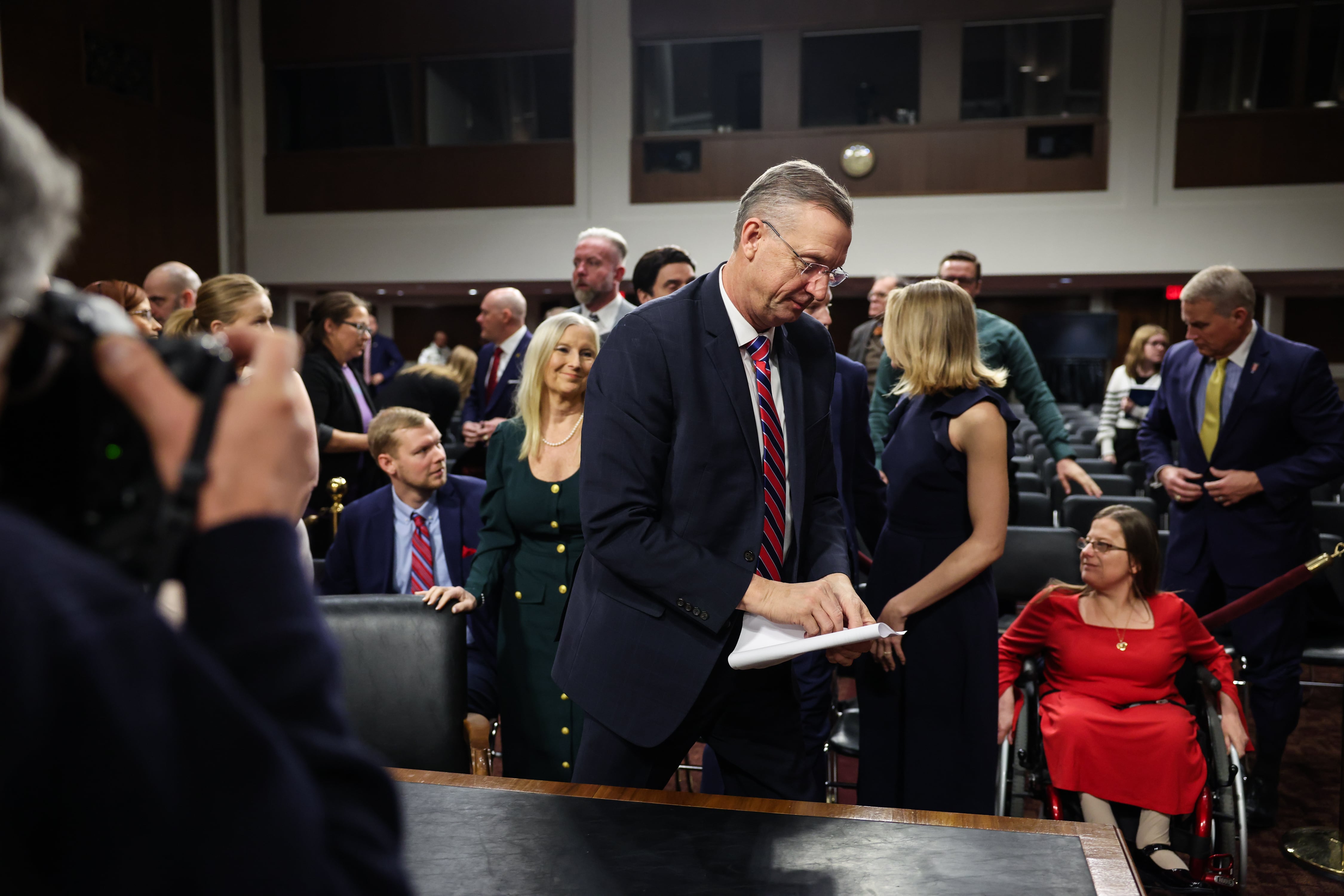GAMBELL, Alaska — Bruce Boolowon, then a lean 20-year-old, and a group of friends were hunting for murre eggs in a walrus skin boat on a remote Alaska island in the Bering Strait when they saw a crippled airplane flying low.
“Something was wrong,” Boolowon, now 87, recalled of that day in 1955. “They came in and one engine was smoking.”
Long before drones or weather balloons became military targets, a U.S. Navy P2V-5 Neptune maritime patrol aircraft had been attacked at about 8,000 feet (2,438 meters) by two Soviet MiG-15 fighters roaring out of nearby Siberia. The plane’s right engine was destroyed and the pilot was making a controlled crash landing.

Its 11 crewmen had injuries in varying degrees of severity, caused either by the bullets sprayed by the two jet fighters, shrapnel or the fireball that erupted when the Neptune landed wheels up on the tundra of St. Lawrence Island and fuel tanks stored in the plane’s belly exploded.
“And as the plane decelerated, the fireball didn’t. And it rolled forward. It burned everybody,” the navigator on the flight, David Assard, told the Anchorage Daily News in 2015. Several of the men had severe burns.
The men took refuge in a ditch on St. Lawrence Island — just 40 miles (64 kilometers) from Siberia and 715 miles (1,151 kilometers) west of Anchorage — to avoid the exploding ammunition and waited, but for what they weren’t sure. When the armed Siberian Yupik Eskimo egg hunters showed up, the Navy men didn’t know if they were about to be captured or rescued.
“Well, they were glad to see us and that we were Americans,” Boolowon told The Associated Press.
They were not only friendly faces but members of the First Scouts unit of the Alaska National Guard who lived on the island and whose job it was to monitor the Soviet Union given their proximity. The 16 guardsmen and an unknown Air Force member helped the crew get medical attention and alerted military authorities the men were safe.

On Tuesday, the guardsmen were honored with Alaska Heroism Medals, giving the Alaska Native men the recognition that wasn’t available 67 years ago. Boolowon, then a corporal, is the sole survivor, and family members of the other 15 received the medals on their behalf.
Maj. Gen. Torrence Saxe, the adjutant general of the Alaska National Guard, not only approved the medals for the men, he personally handed them out at the ceremony held with a driving snow outside. Residents filled the gym at John Apangalook School in Gambell, home to the King Polar Bears — or Qughsatkut in Siberian Yupik— sports teams. Family members receiving medals sat in honored seats on the gym floor, and Saxe posed for photos with each after presenting the medals and a certificate. A community luncheon followed.
“I’m glad we’re going to get recognized a little bit for saving the crewmembers,” Boolowon said.
Shortly after the June 22, 1955, rescue, two of the guardsmen, MSgt. Willis Walunga and SSgt. Clifford Iknokinok, received honorific letters and certificates from the Navy and National Guard. They were taken to Washington, D.C., and presented “Wings of Gold” with the Honorary Naval Aviator Program designation. They were only the second and third persons so honored after the program started in 1949.
The other 14 only received letters. “I don’t know why they didn’t include us,” Boolowon said of the Navy designation.
There were no other medals available to the men for their deeds because it wasn’t a combat mission, and the rescue was considered a peacetime affair.
“The families felt like that the members should have received a better award than a letter of appreciation,” said Verdie Bowen, the director of the state Office of Veterans Affairs. “The best one that we could find that fit this feat of valor was the state of Alaska’s Heroism Award,” he said. It honors Alaska National Guard members who distinguish themselves by heroism, meritorious achievement or going beyond the call of duty.
Boolowon was with Iknokinok, Walunga and others in the first boat to arrive at the crash site, where they found the men.
He said they weren’t scared it was a Soviet aircraft because they were familiar with the U.S. plane from its frequent maritime patrols out of Naval Air Station Kodiak. On this mission, the plane was looking for icebergs and navigational aids in the Bering Strait. The wreckage of the plane still sits 8 miles (12.9 kilometers) from the village.
Boolowon and two other men from the first boat went to Gambell to get medical supplies, stretchers and more help. Another boat arrived, and the guardsmen eventually took the men to the village for treatment by a local nurse at a clinic and a church until a transport plane arrived about 12 hours later to take them to Anchorage. Seven of the injured were later flown to California to recuperate.
The June 22, 1955, attack was labeled a possible “mistake” by embarrassed Soviet leaders and came at a problematic time for the Soviet Union. A summit to de-escalate Cold War tensions was planned the following month in Geneva with President Dwight Eisenhower, Soviet Premier Nikolai Bulganin and the prime ministers of Great Britain and France.
After learning the plane was shot down, Eisenhower directed Secretary of State John Foster Dulles to meet with Soviet Foreign Minister Vyacheslav M. Molotov during the 10th anniversary meeting of the United Nations in San Francisco.
Molotov was unaware of the incident but promised an investigation. The Kremlin wired Molotov his instructions, which included presenting Dulles “with a conciliatory note that admitted the incident could have been ‘due to a mistake,’” David Winkler, the historian at the Naval Historical Foundation, wrote in his 2017 book “Incidents at Sea: American Confrontation and Cooperation with Russia and China, 1945-2016.”
It was the first time the Soviets both ever expressed regret and paid reparations, Winkler told the AP last summer, and the summit went on as planned. The Soviets agreed to compensate the U.S. for the plane, sending just over $35,000 (about $400,000 today) in reparations. The money was split among the crewmen.
In the early 1990s, Assard travelled to Gambell to thank them and presented the village with a bronze plaque.
“We were very fortunate in landing on an American island and being found by American Eskimos,” Assard, the flight navigator who is now deceased, told the Anchorage newspaper in 2015. “They couldn’t have been more gracious.”
The other 13 guardsmen posthumously awarded medals were Pfcs. Holden Apatiki, Lane Iyakitan, Woodrow Malewotkuk, Roger Slwooko, Vernon Slwooko and Donald Ungott; Sfc. Herbert Apassingok; Sgt. Ralph Apatiki Sr.; Cpls. Victor Campbell, Ned Koozaata and Joseph Slwooko, and Pvts. Luke Kulukhon and Leroy Kulukhon.
JoAnn Kulukhon accepted medals on behalf of her two uncles and plans to prominently display them in her home. “I’m so proud of them,” she said. “I know they’re happy.”
As for receiving his own medal, Boolowon said the recognition is simply for work well done.
“I’m glad we did our duty as a guardsman,” he said.
AP Investigative Researcher Randy Herschaft in New York contributed to this report.




